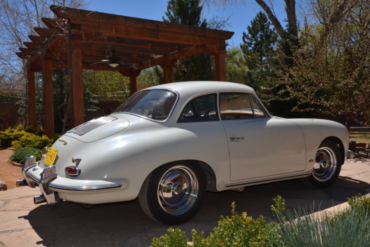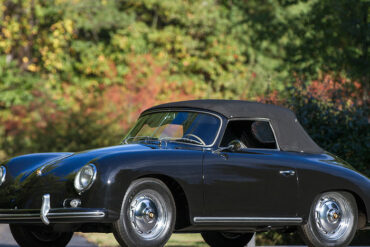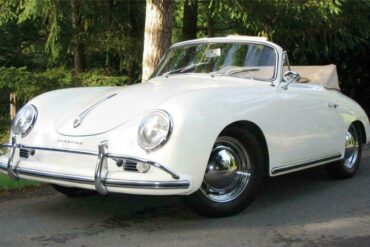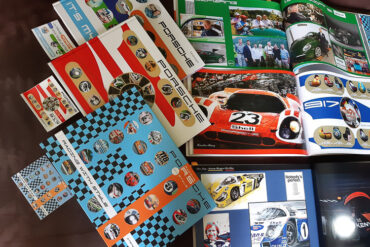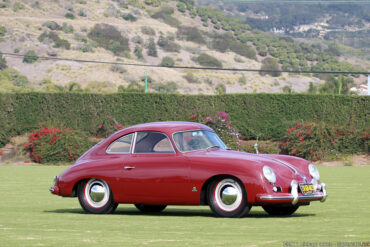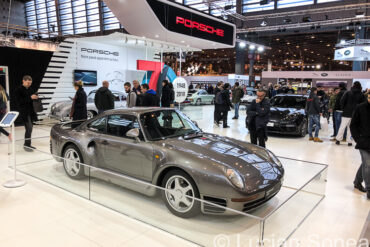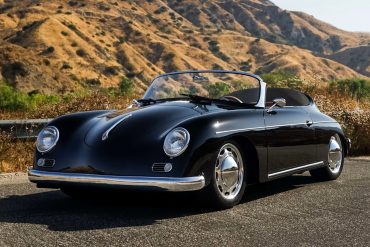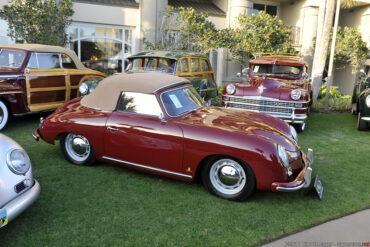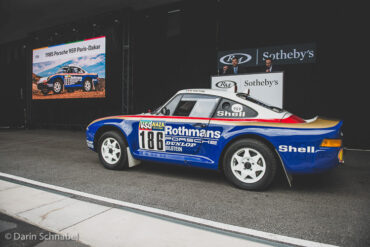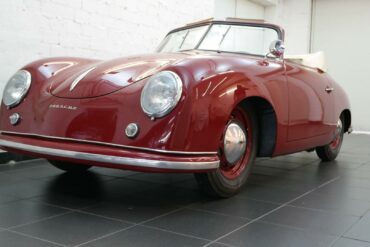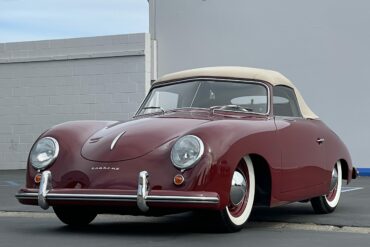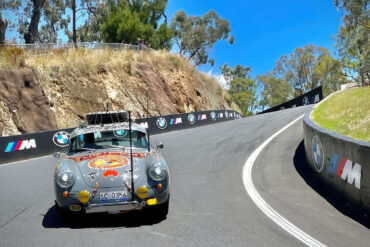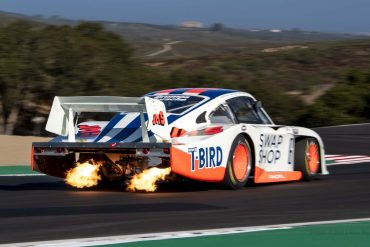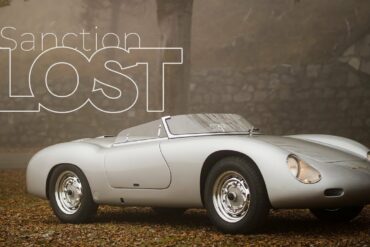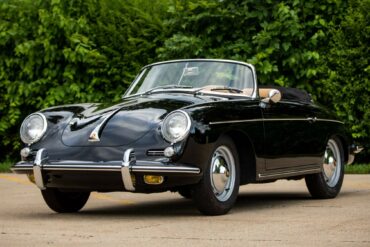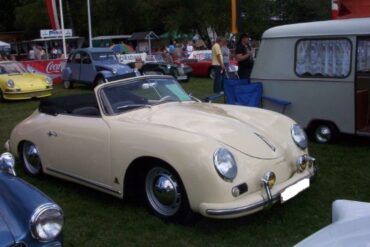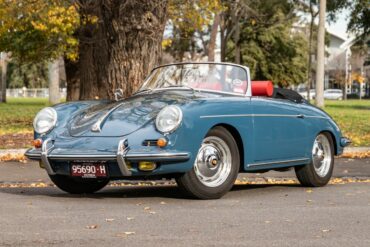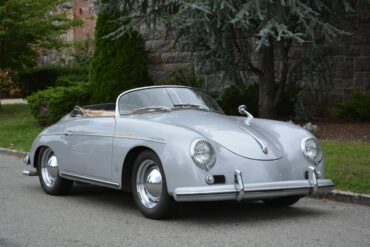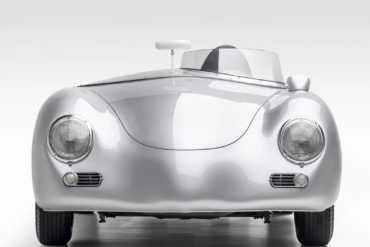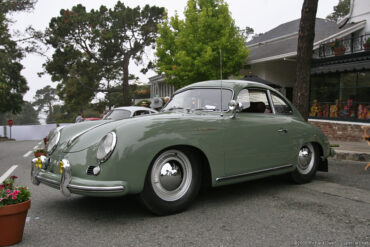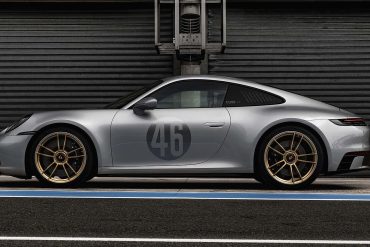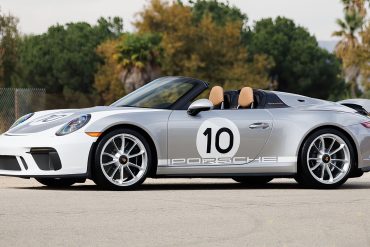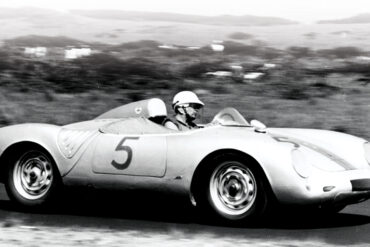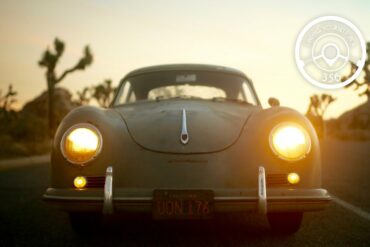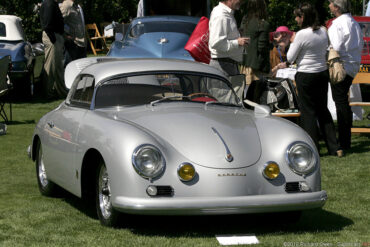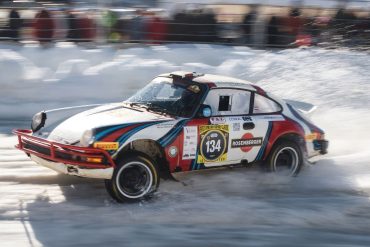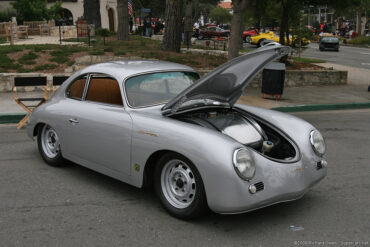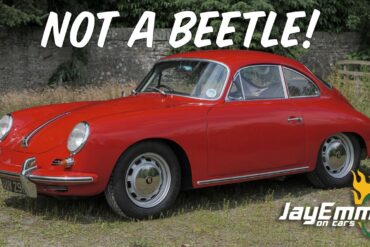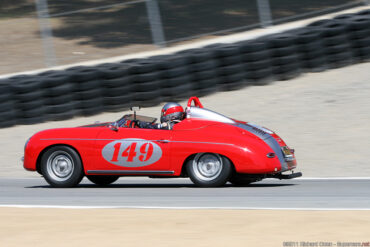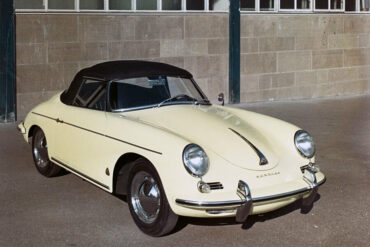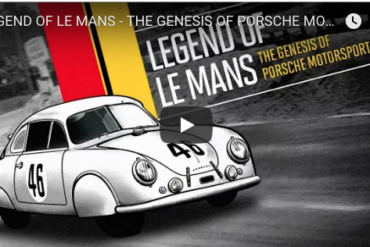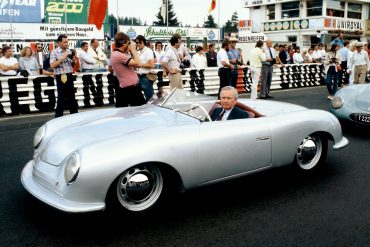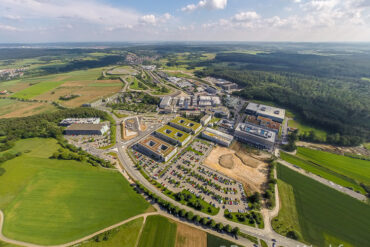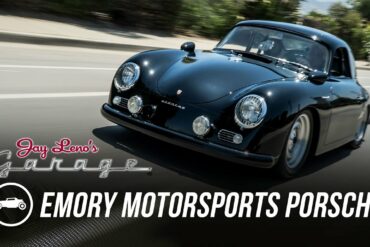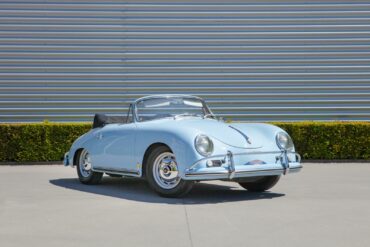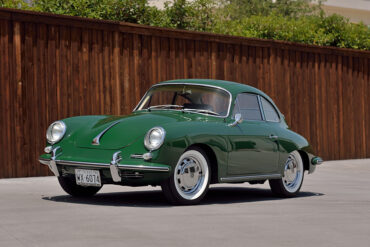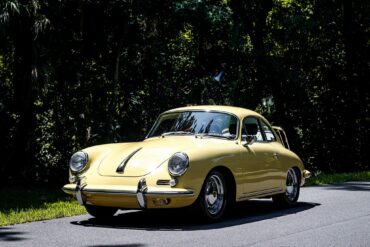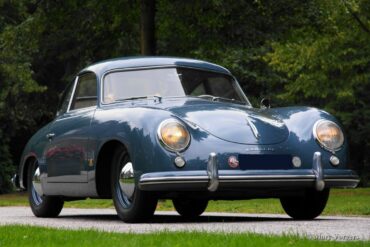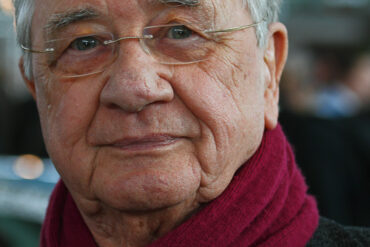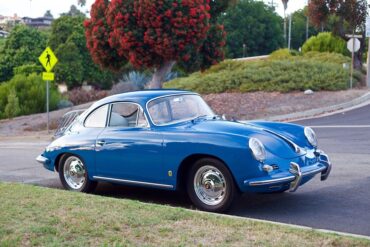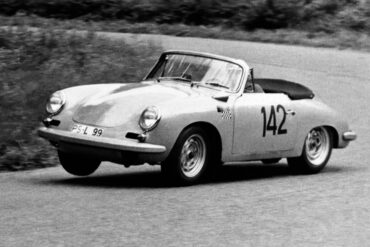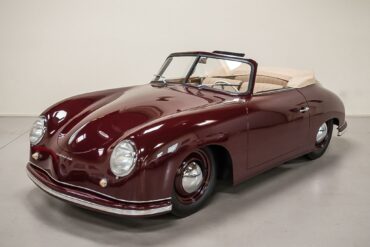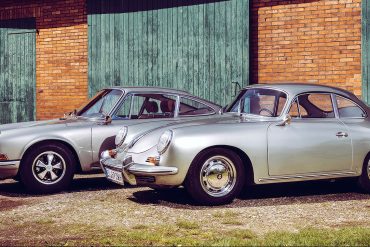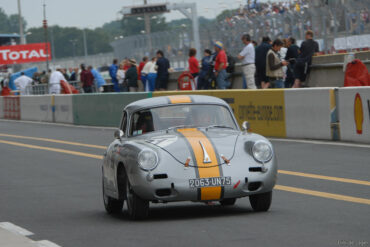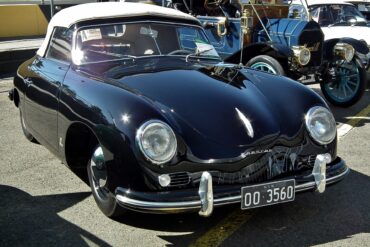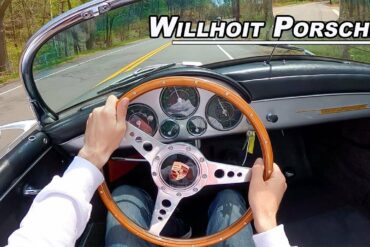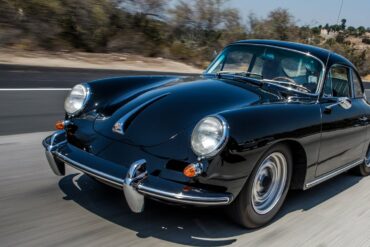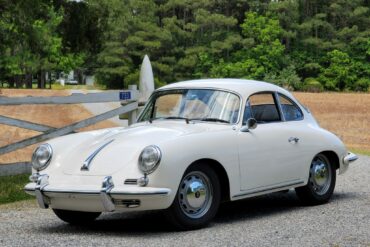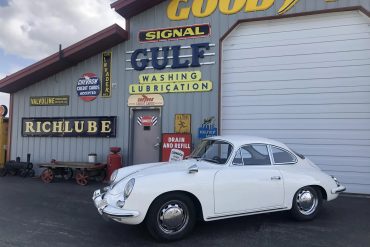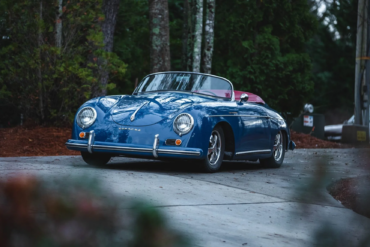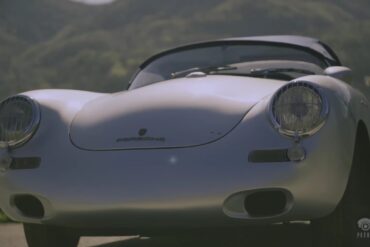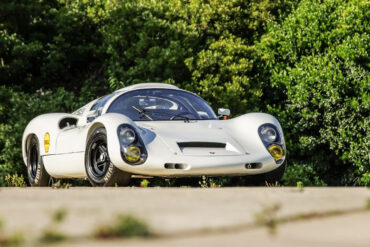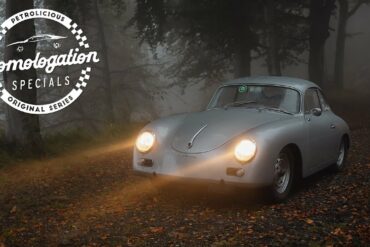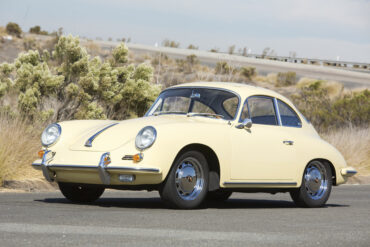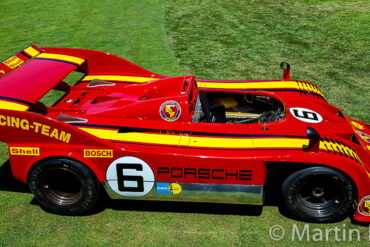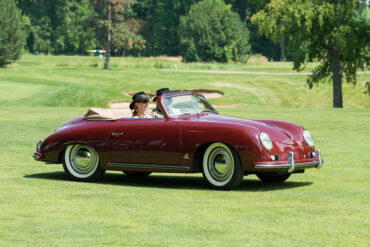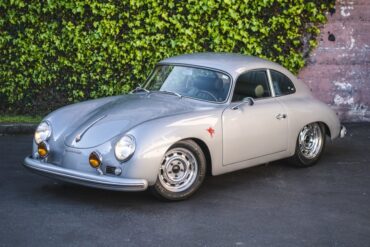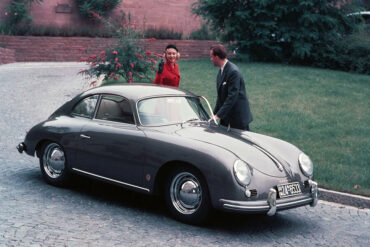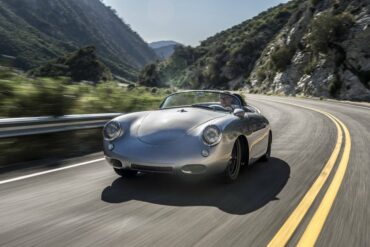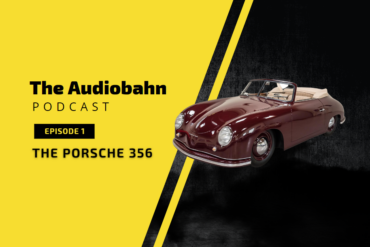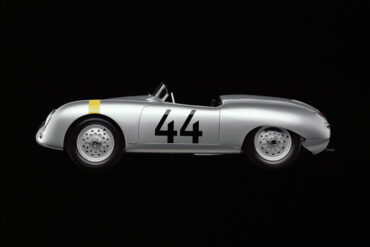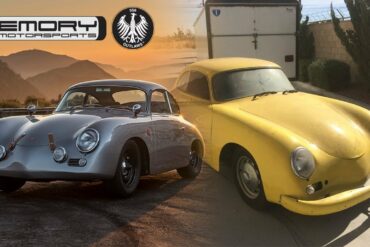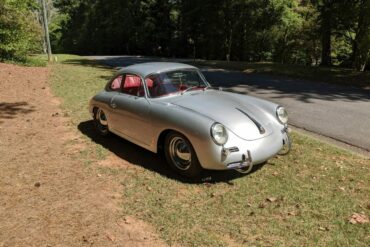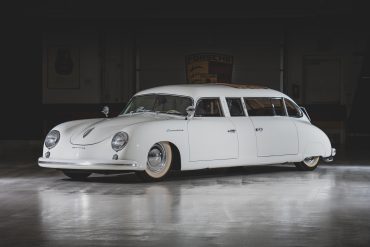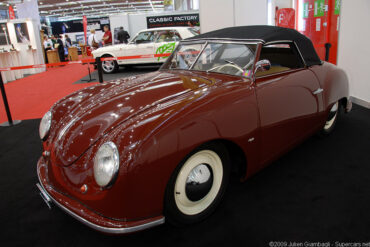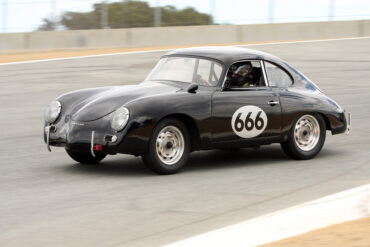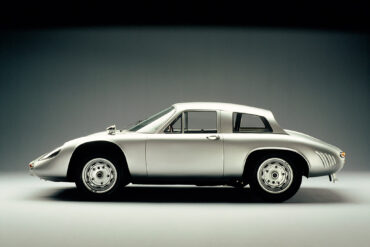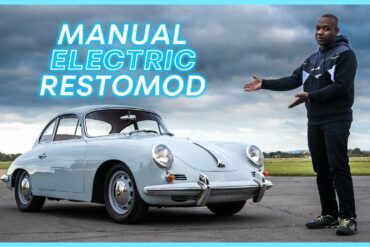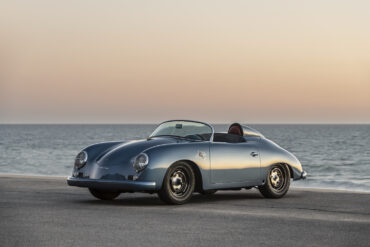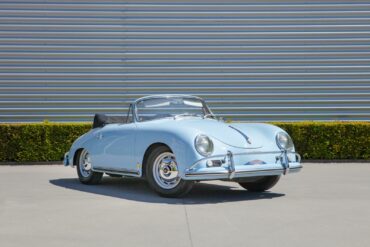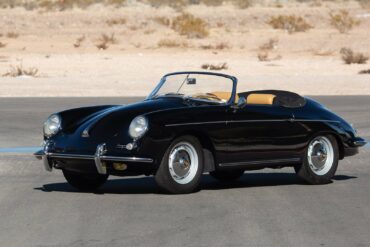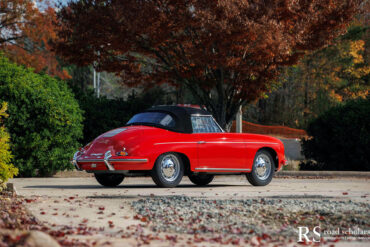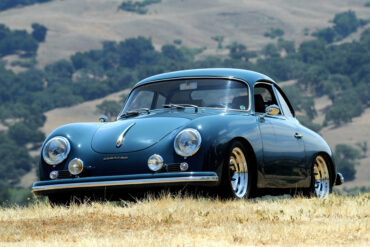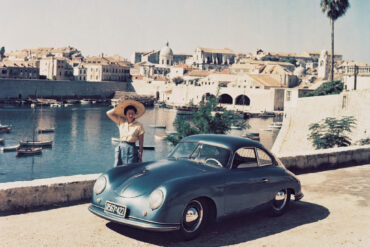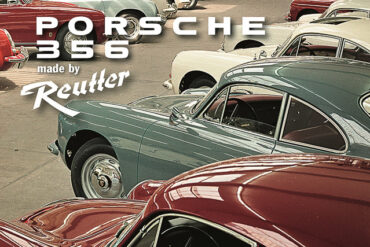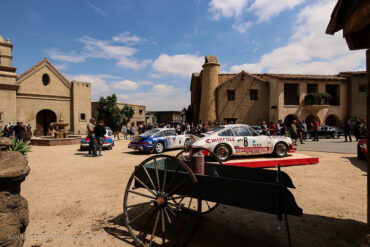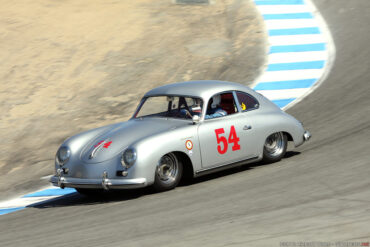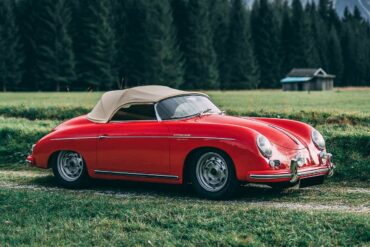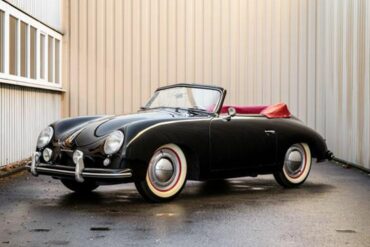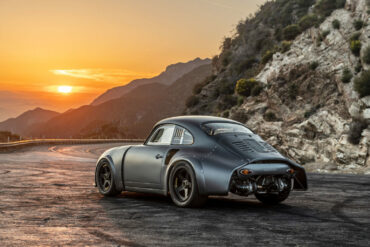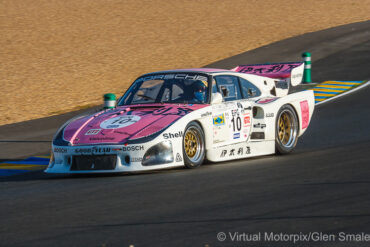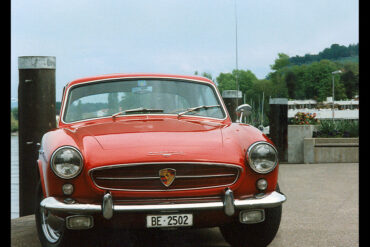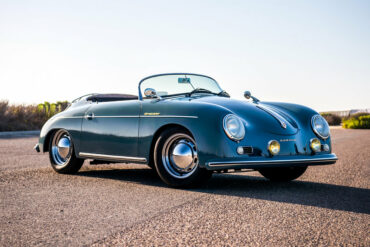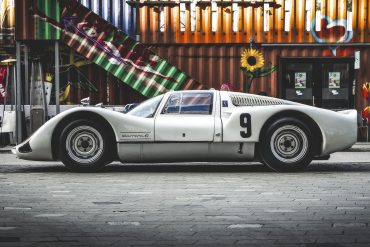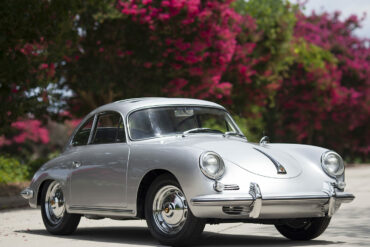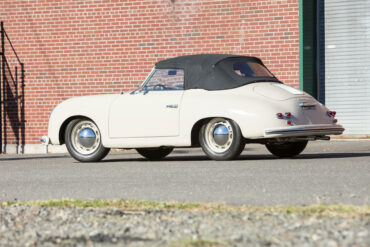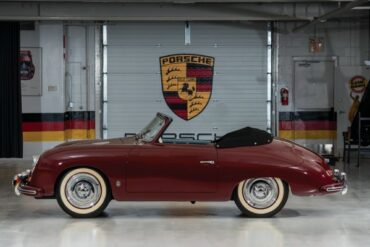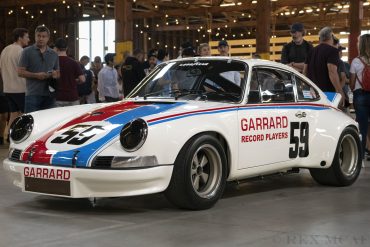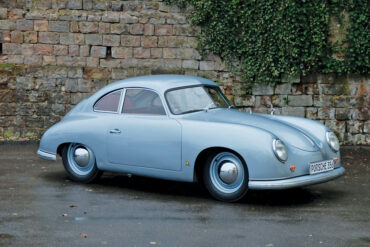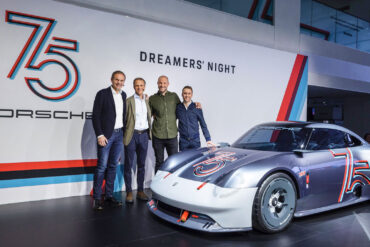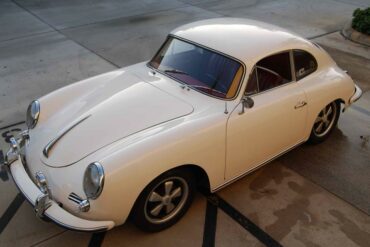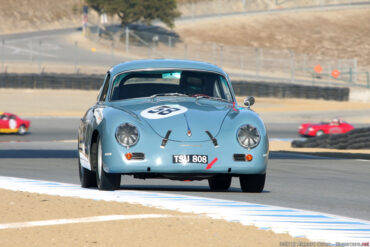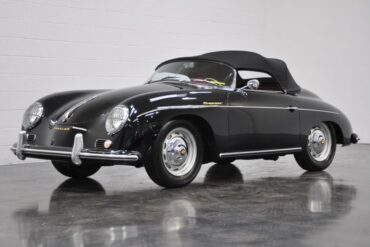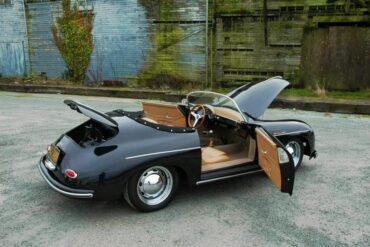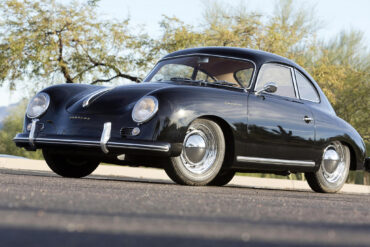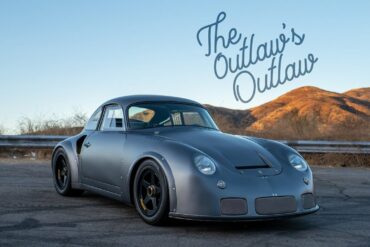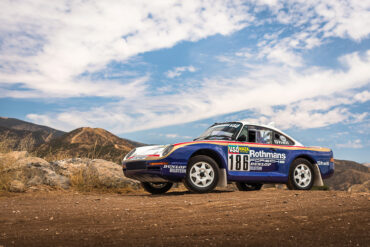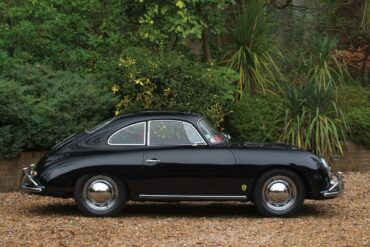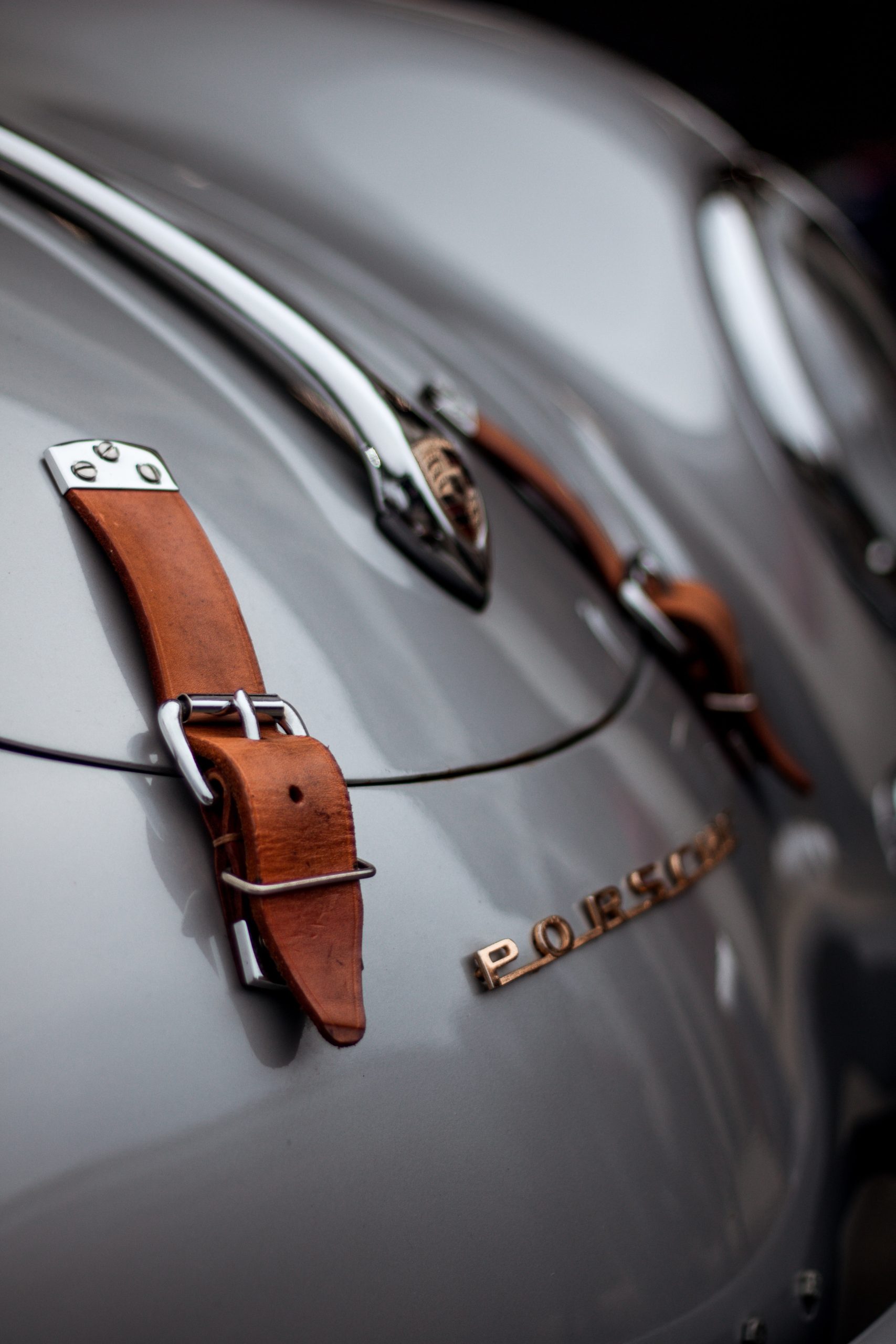1961 – 1963 Porsche 356B/1600 S Notchback Coupe Technical Specifications Type Series Production Car Production Years 1959 – 1963 Built...
Porsche 356
The Porsche 356 was the first production car from Porsche. Earlier cars designed by the company included Cisitalia Grand Prix race car, the Volkswagen Beetle, and Auto Union Grand Prix cars, but it was the 356 that changed things forever for sports car enthusiasts the world over. Ferdinand Porsche, Sr. founded the company that still bears his name, but it was his son Ferdinand, widely known as Ferry, who created the Porsche we know today. In the early years after WWII, the 356 was the car that made Porsche famous. See our Porsche 356 Research Hub
1956 – 1959 Porsche 356A/1600 Super Cabriolet Technical Specifications Model Year 1956 – 1959 Built At Stuttgart, Germany Body Stylist...
1959 Porsche 356A/1600GS Carrera de Luxe Cabriolet Pictures & Gallery...
Racing Porsche with Style © Stéphane Coradi This is Stéphane Coradi’s third publication, and the third of his books that...
1952 – 1955 Porsche 356/1500 Coupe (Pre-A) Pictures & Gallery...
Porsche 959 Coupé (only 292 models produced in 1988 in order to obtain Group B racing homologation), 6-cylinder boxer turbo,...
West Coast Customs has dramatically transformed this Porsche into a fusion of contemporary performance and the timeless body style of...
1952 – 1955 Porsche 356/1500 Cabriolet (Pre-A) Technical Specifications Type Series Production Car Production Years 1952 – 1955 Built At...
1985 Porsche 959 Paris-Dakar – chassis #WP0ZZZ93ZFS010015 (courtesy of RM Sotheby’s) Lot #196, the 1985 Porsche 959 Paris-Dakar, outstripped its...
1954 – 1955 Porsche 356/1300 Super Cabriolet (Pre-A) Pictures & Gallery ...
1956 – 1957 Porsche 356A/1300 Cabriolet Pictures & Gallery...
It started with the Porsche 356 As we all know, the 356 was the first globally sold car made by...
After what felt like an eternity for Porsche enthusiasts, the seventh “family affair” of monumental proportions kicked off on the...
Porsche 356 Carrera Speedster Zagato Please turn on closed captions to enjoy this film in English. Zagato is turning 100 years...
In September of 1959 Porsche revealed their fully updated 356 known as the 356B. This had a completely revised body that was more suitable for the American market. The 1600 Super was also known as the 1600 S and that is what we are covering on this page. The 1600 Super sat in the middle of the lineup, below the Super 90 and above the base 1600. There were several variants with the base 1600 S engine, including the Coupe, Cabriolet, Notchback Coupe and Roadster, across both the T5 generation and T6 generation.
1952 – 1954 Porsche 356/1100 Cabriolet (Pre-A) Pictures & Gallery...
1959 – 1963 Porsche 356B/1600 Super 90 Roadster Pictures & Gallery...
1956 – 1958 Porsche 356A/1600 Super Speedster Technical Specifications Model Year 1956 – 1958 Built At Stuttgart, Germany Body Stylist...
It’s really hard not to love this Porsche 356 A Carrera Speedster! Photo Credit: Ted7 (@iamted7)...
1955 Porsche 356/1500 Continental Coupe (Pre-A) Technical Specifications Type Series Production Car Built At Stuttgart, Germany Body Stylist Erwin Komenda...
Porsche has unveiled the 911 Carrera GTS Le Mans Centenaire Edition, a special version of the iconic 911 . This...
The original light-weight The Speedster variant of the 356 was introduced in 1954, featuring a low-raked windscreen, bucket seats, and...
For some, motor racing is an inevitability. It is a passion that they are born with and it is just...
1956 Porsche 356 C Matt Hummel’s love for vintage automobiles has led him to many interesting places, but no car...
A handful of push-rod 356As were delivered from the factory with a lightweight package that was usually reserved for the Carrera race cars. Called GTs, these got the stripped out interior, aluminum doors, a large fuel tank and Porsche ATE disc brakes. As few as four Speedsters came equipped this way. Since the four-cam was only a marginal improvement in power, the regular 1600 Super was more than enough for the small car.
Although the weather put a spanner in the works of this year’s Ice Race with heavy rain and temperatures that...
1957 – 1958 Porsche 356A/1500GS Carrera GT Coupé Pictures & Gallery...
Porsche 356C Driven In today’s video, we don’t learn much – but we do get to see me go rather...
1959 Porsche 356A/1600 Convertible D Technical Specifications Model Year 1959 Built At Stuttgart, Germany Body Stylist Erwin Komenda Coachbuilder Drauz...
1959 – 1963 Porsche 356B/1600 Cabriolet Technical Specifications Type Series Production Car Production Years 1959 – 1963 Built At Stuttgart,...
THE GENESIS OF PORSCHE MOTORSPORT…watch the restoration by Rod Emory of the #46 Porsche 356 SL that won its class...
The Porsche 356/1 was the first real car created by Ferdinand "Ferry" Porsche. This prototype car was a two-seater open roadster with a mid-mounted, air-cooled flat-4 engine of 1,131 cc displacement. While the body was an original design, most of the mechanicals were from the Volkswagen Beetle. Only one 356/1 was made.
Weissach – Porsche Werk 8 – on 9 June 2016 By the late 1950s, the German Wirtschaftswunder was well underway...
A Drive In An Emory Outlaw 356 Third generation SoCal gearhead Rod Emory takes Jay through his 1958 Emory Special...
1956 – 1957 Porsche 356A/1300 Cabriolet Technical Specifications WHAT BODY STYLE? 2 door fixed-head coupé with 2+2 seats HOW LONG?...
Porsche 356 Paint Color Options This post outlines all the color options for the 356 over its production life. We...
1964 – 1965 Porsche 356 SC Coupe Technical Specifications Model Years 1964 – 1965 Built At Stuttgart, Germany Engine Flat-4...
1953 – 1955 Porsche 356/1500 Super Coupe (Pre-A) Pictures & Gallery ...
Hans Herrmann at the Retro Classics in Stuttgart, Germany 2010 Hans Herrmann, one of the most successful and popular racing...
1959 – 1963 Porsche 356B/1600 S Coupe Technical Specifications Type Series Production Car Production Years 1959 – 1963 Built At...
As with the earlier versions, the Carrera was offered both in a Carrera GT Deluxe version for the road and the Carrera GT for racetrack duties. Unlike these earlier models, the new car benefited from the 2.0 liter engine introduced as the Carrera 2 was unveiled in September 1962. The 2.0 Carrera used a variant of the Type 547 engine with a larger bore and stoke, having 1966cc.
1950 – 1951 Porsche 356/1100 Split-Window Cabriolet (Pre-A) Technical Specifications Type Series Production Car Production Years 1950 – 1951 Built...
Did you know that 2023 sees the Porsche 356 C turning 60? We think it’s a birthday still worth celebrating,...
1959 – 1963 Porsche 356B/1600 Coupe Pictures & Gallery...
In 1953, the 1300 S or "Super" was introduced, and the 1,100 cc engine was dropped. The 360 1300 Super boasts a power improvement to 60 BHP with Porsche's "Super" engine in the Porsche 356 model range. Minor visual differences were implemented such as front indicators integrated with the horn grilles and bumpers protrude from the body with over-riders. In June 1954, the plain-bearing 1300cc engine switched over to the same block as the 4cc larger roller-bearing variant.
POV Drive In An 1800cc Twin Plug 356A Speedster Sit back, turn up the volume and enjoy...
1963 Porsche 356 Carrera 2. When Jay was lucky enough to acquire what he calls “one of the most beautiful...
The Porsche 356 SC, was the top-of-the-line variant in terms of performance for the 356 C Generation, sporting the highest specific output pushrod 4-cylinder engine ever available from Porsche with 107 HP. The SC engine produced 107 bhp at 5200 rpm and featured a stouter counter-weighted crankshaft, short skirt pistons, a more radical camshaft configuration, and large Solex carburetors. The SC was the natural successor of the previous generation Super 90 and represented the top-of-the-line variant for the final evolution of the Porsche 356.
Bring A Trailer is offering two beautiful Porsche examples, a 2016 Porsche Cayman GT4 and a 1964 Porsche 356C Coupe....
Live now on Bring A Trailer is fantastic example of a 1955 Porsche 356 Speedster finished in Oslo Blue over...
It’s rare for a car to be considered as a part of a family. But this Porsche 356 Speedster managed...
It only happens once in a lifetime; your 75th birthday. This June 8th marks Porsche’s 75th anniversary so Bring-a-Trailer auction...
Four-Cam Coupe Porsche 356 Carrera GS/GT Driven The Porsche 356 brought the automaker into a new era. The model started...
1964 – 1965 Porsche 356 C 1600C Coupe Pictures & Gallery...
Plenty of 911-based cars were entered in the Concours The Hillsborough (California) Concours d’ Elegance, on 21 July 2019, has...
1955 Porsche 356/1500 Continental Cabriolet Pictures & Gallery...
From the outside, the 356A kept to the Porsche mantra of stepwise evolution. The new model was outwardly identical to the previous version except for the wider tires, a small rub-strip below the doors, a fully-curved front window and enamel paint replacing lacquer previously used. The 356 A came with an all-alloy air-cooled Flat 4 engine in four states of tune, with the 1300 having Type 506/2 engine with 44 bhp and 60 lb-ft.
Porsche 356 Spare Parts Catalogs (1950 – 1959 Model Year) Porsche 356/356A Parts These official Porsche PET Diagrams and codes for...
A Drive In the Emory Outlaw Roadster This 1960 Porsche 356 Roadster is a rather unique example of the Emory...
Episode One: The Porsche 356 Summary Welcome to The Audiobahn, the Stuttcars.com podcast focused on all things Porsche. In our first...
Successful VW Dealer and racer Walter Glöckler built several specials for the German Car Championship including this roadster. It was built with assistance from Porsche in Zuffenhausen and raced without its optional hardtop in the 1952 champion before being shipped overseas for SCCA racing. Weidenhausen created the body from aluminum with a nose that bore close resemblance to the 356 Porsche but had semi-skirted rear wheels and cutaway rear corners similar to Glockler-Porsche 1 and 2.
How we made the 1959 Emory Outlaw RHD Coupe in GT Silver How we made the 1959 Emory Outlaw RHD...
A Beautiful Example With a Red Interior The Porsche 356B Coupe is a car that stands out in many people’s...
The man behind this 356 limousine is John Dixon who decided to create a personalized Porsche-based limousine for his daughter’s...
Porsche 356/2 Gmünd Cabriolet Specifications type Series Production Car production years 1948 – 1951 built at Austria production 41 price...
1956 – 1959 Porsche 356A/1600 Coupe Pictures & Gallery...
1963 Porsche 356B/2000GS Carrera 2 GT Dreikantschaber Specifications type Racing Car production 2 engine Type 587, Boxer-4 fuel feed Twin...
Electric Porsche 356 Review: An EV For Petrolheads! The Electrogenic 356 is no ordinary Porsche restomod. This one might look...
Shifting the Recipe a Bit Rod Emory of Emory Motorsports has revealed the 1959½ Speedster. It’s the latest evolution of...
1954 – 1955 Porsche 356/1300 Super Cabriolet (Pre-A) Technical Specifications Type Series Production Car Production Years 1954 – 1955 Built...
1959 – 1963 Porsche 356B/1600 S Roadster Technical Specifications Type Series Production Car Production Years 1959 – 1963 Built At...
Reviewed and Edited by Rex McAfee Impeccable numbers matching 356B S90 Roadster In 1959, Porsche introduced a complete update of...
1956 – 1957 Porsche 356A/1300 Coupe Technical Specifications WHAT BODY STYLE? 2 door fixed-head coupé with 2+2 seats HOW LONG?...
The series production didn't allow the use of handmade aluminium body panels, so, the cars were made of stamped steel panels. The first Stuttgart-built 356 have later been called as 356 Pre-A. These cars have either two separate windscreen glasses like the 356 built in Austria, or a sharply bent windscreen glass! Introduced in 1948, the Porsche 356 Pre-A Coupe was the first variant available for the Porsche 356. The engine started as a 1100 cc flat four that produced 40 hp. It was available as a coupe and cabriolet body style.
Porsche 356 – Made by Reutter: by Frank Jung © Delius Klasing Verlag When the second edition of this fine...
Luftgekühlt 6 – Porsche 356 street scene There was an obvious irony to Luftgekühlt 6. Somehow an event devoted to...
If you were lucky enough to visit Rennsport Reunion 7 in Monterey, California, then chances are you gazed at one...
1955 Porsche 356/1500 Continental Coupe Pictures & Gallery...
Beginning in 1954, a new version of the Pre A 356 was introduced that is now known as the Porsche 356 Pre-A Carrera, with a powerful engine that was available in coupe, cabriolet, and Speedster variants. Highly desirable today, the Carrera name denotes the race inspired 1500 cc four cam motor that produced an astounding 110 hp. Approximately 97 of these motors were produced sometime between 1954 and early 1955. The Carrera versions would continue in the next generation 356 as the Porsche 356 A Carrera.
1953 – 1955 Porsche 356/1500 Super Cabriolet (Pre-A) Technical Specifications Type Series Production Car Production Years 1953 – 1955 Built...
Want to Join the Outlaw Gang? Rod Emory makes some of the most insane modified Porsches out there. This Porsche...
Ferry Porsche had in fact requested Swiss technicians to make a less sporty and more elegant version of the 365 B and thus the 1600 Beutler Coupè was born. This project is a 2+2 based on a Porsche 1600. Like the Porsche, the car is built on a VW platform, but includes Porsche elements such as the brakes and the engine. It was built in 5 copies before production was stopped in 1957 due to a change in commercial strategies by the German company.
1961 – 1963 Porsche 356B/1600 Super 90 Coupe Technical Specifications Type Series Production Car Production Years 1959 – 1963 Built...
1956 – 1959 Porsche 356A/1600 Super Speedster Pictures & Gallery...
Background In the Porsche world, “Luftgekühlt” represents all the air-cooled cars in the manufacturer’s history, from the Pre-A 356 through...
1954 – 1955 Porsche 356/1300 Super Coupe (Pre-A) Technical Specifications Type Series Production Car Production Years 1954 – 1955 Built...
1952 – 1954 Porsche 356/1100 Cabriolet (Pre-A) Technical Specifications Type Series Production Car Production Years 1952 – 1954 Built At...
1954 – 1955 Porsche 356/1300 Split-Window Cabriolet (Pre-A) Technical Specifications Type Series Production Car Production Years 1954 – 1955 Built...
From the creators of Luftgekühlt comes the largest single-brand automotive experience to hit Southern California. It embarks on a fresh...
1951 – 1953 Porsche 356/1300 Split-Window Coupe (Pre-A) Technical Specifications Type Series Production Car Production Years 1951 – 1953 Built...
Celebrating the birth of a legendary brand In 1948, Ferry Porsche realized his dream of a sports car: with his...
1959 – 1963 Porsche 356B/1600 S Coupe Pictures & Gallery...
1958 – 1959 Porsche 356A/1600GS Carrera GT Coupé Pictures & Gallery...
1956 – 1959 Porsche 356A/1600 Cabriolet Technical Specifications Production Years 1956 – 1958 Released At 1955 Frankfurt Motor Show Built...
1956 – 1957 Porsche 356A/1300 Speedster Pictures & Gallery...
The Porsche 356 was the first production car from Porsche. Earlier cars designed by the company included Cisitalia Grand Prix...
They call it the 356 RSR Rod Emory’s parents brought him home from the hospital in a hot-rodded short wheelbase...
Porsche 911s on track at the Porsche Experience Centre Atlanta (Courtesy of the Porsche Experience Centre Atlanta) RM Sotheby’s, in...
1956 – 1959 Porsche 356A/1600 Super Coupe Pictures & Gallery ...


